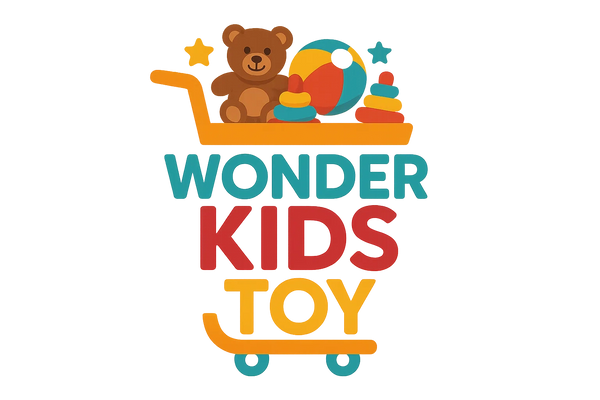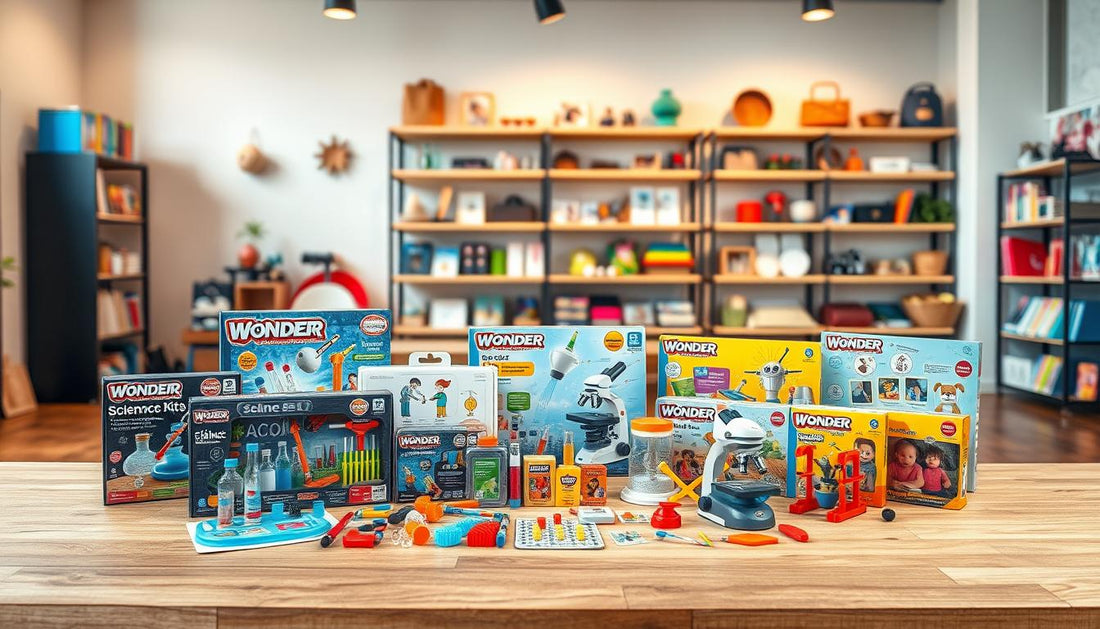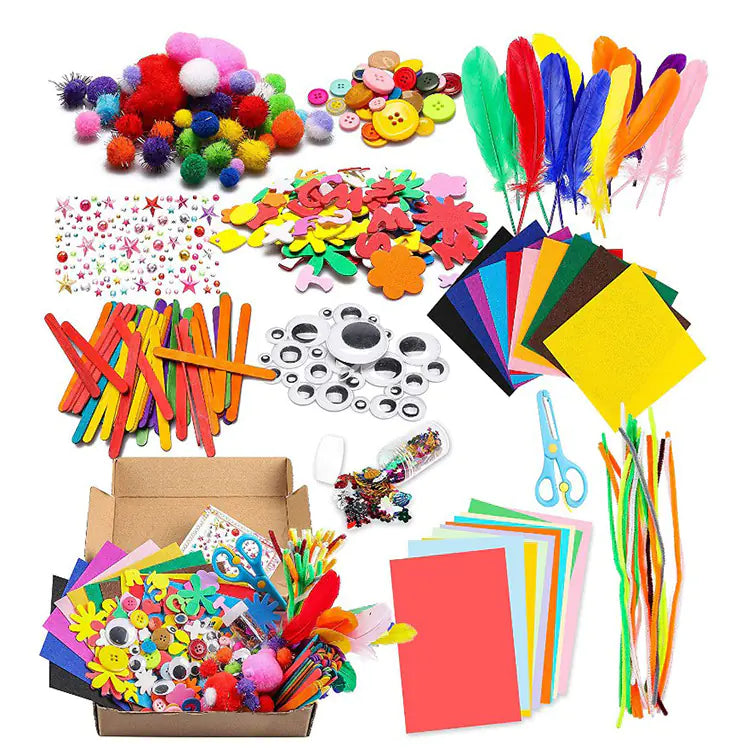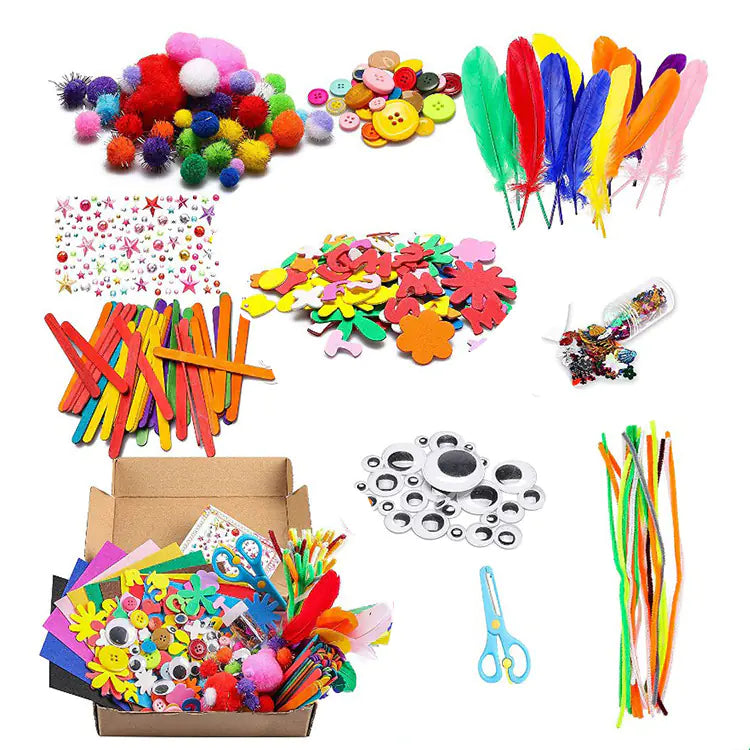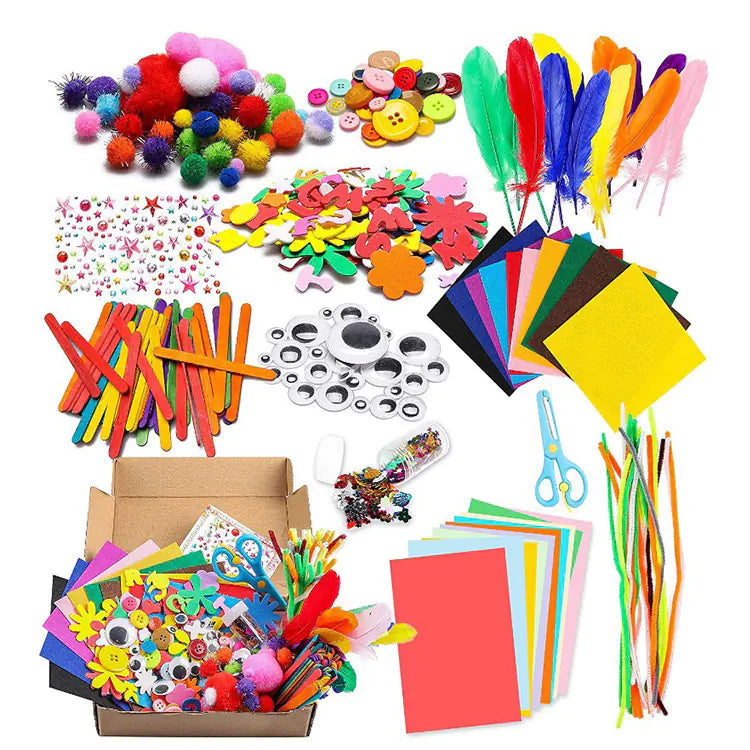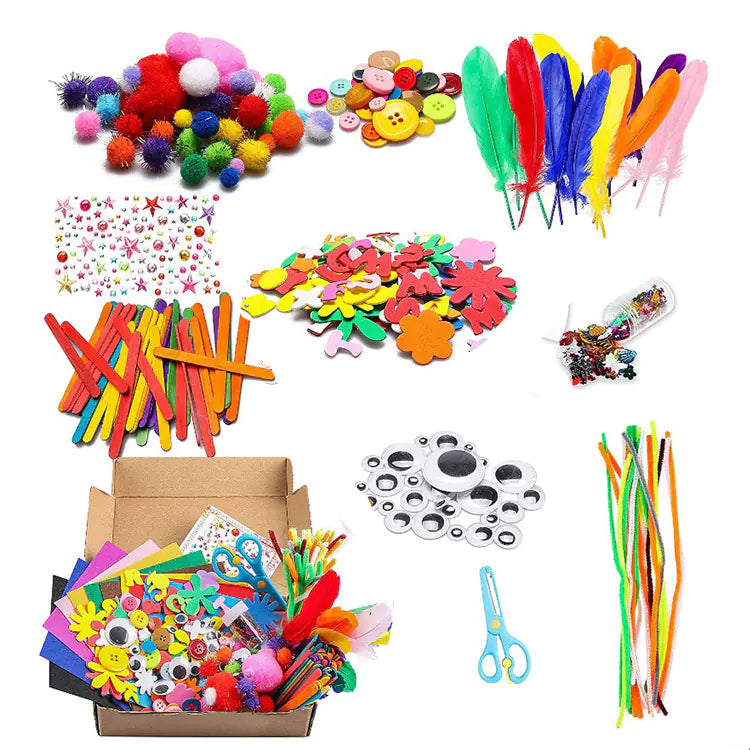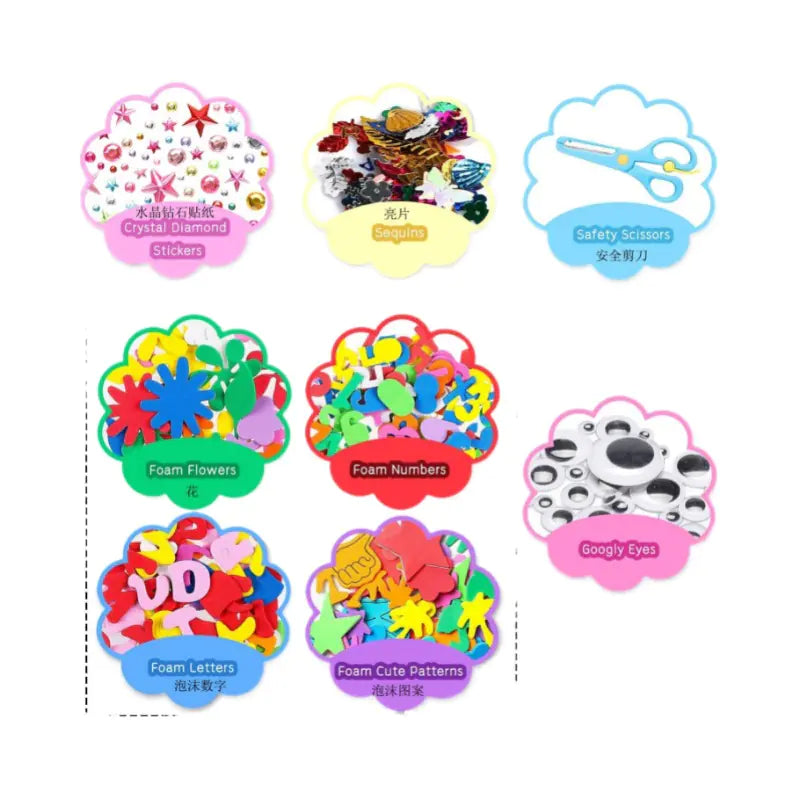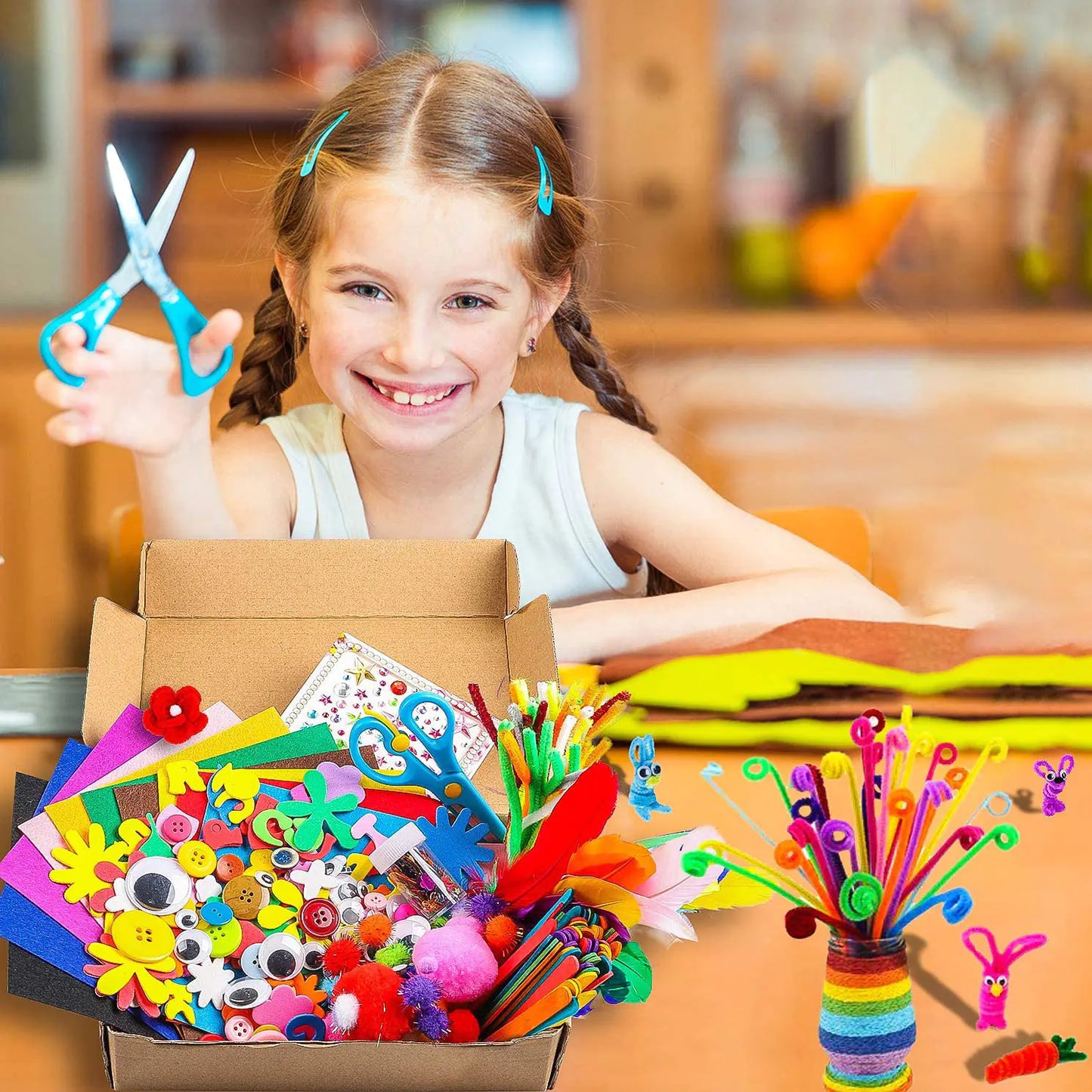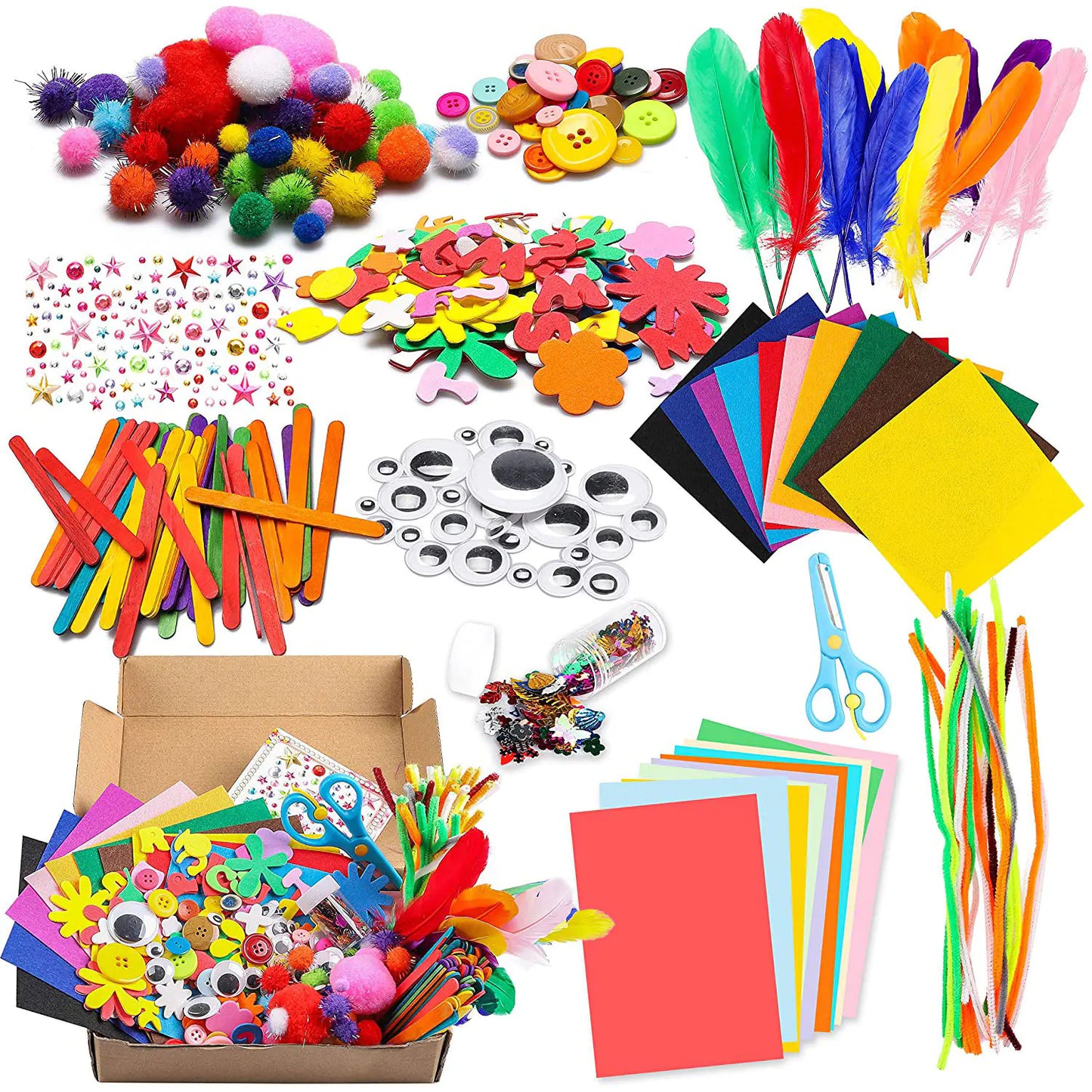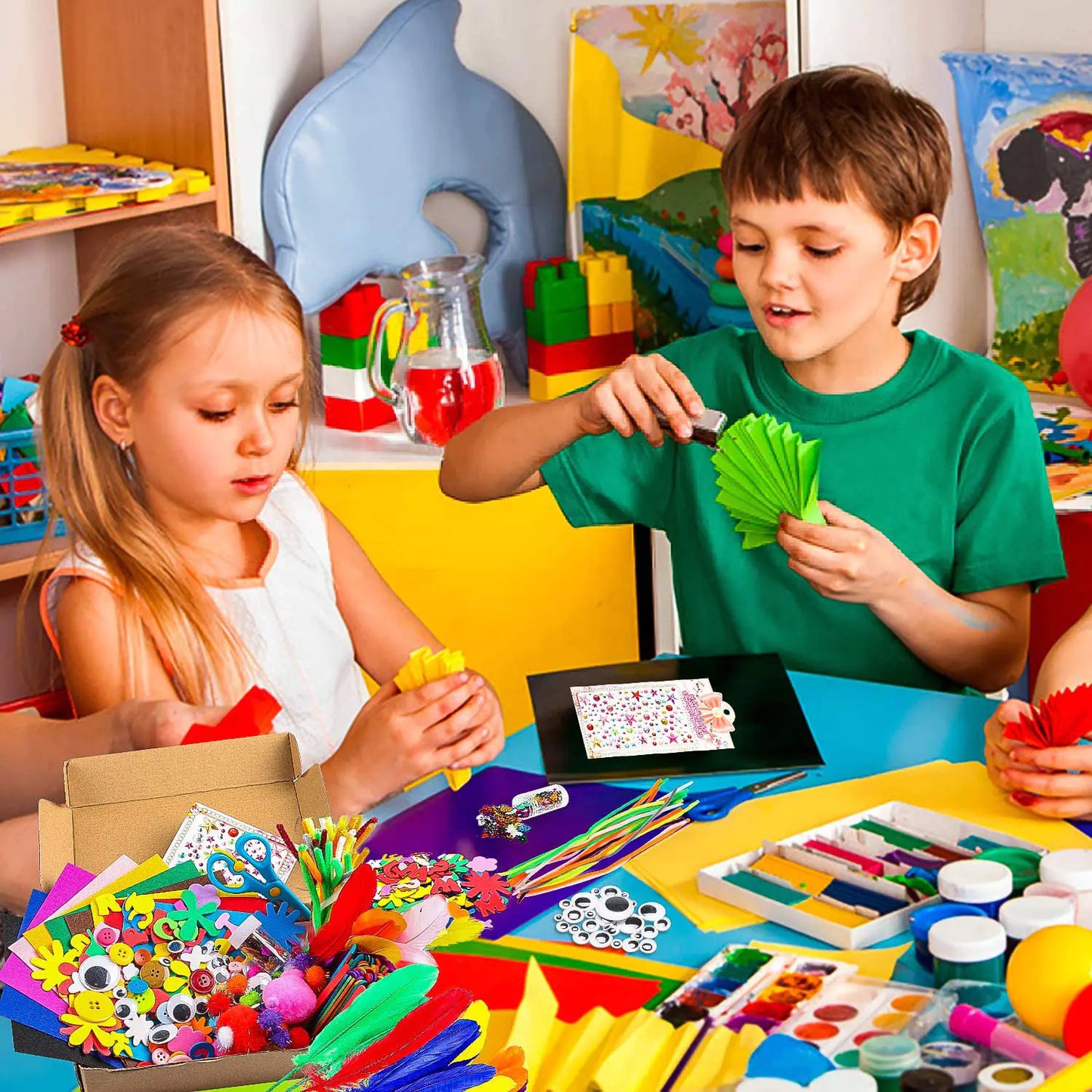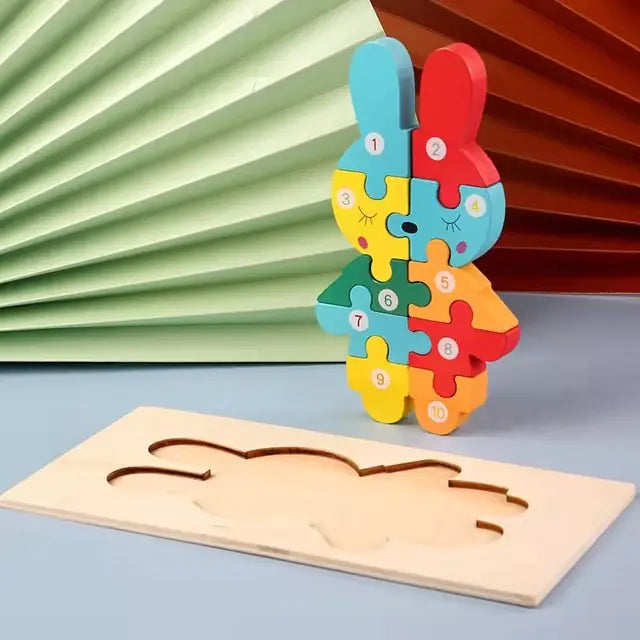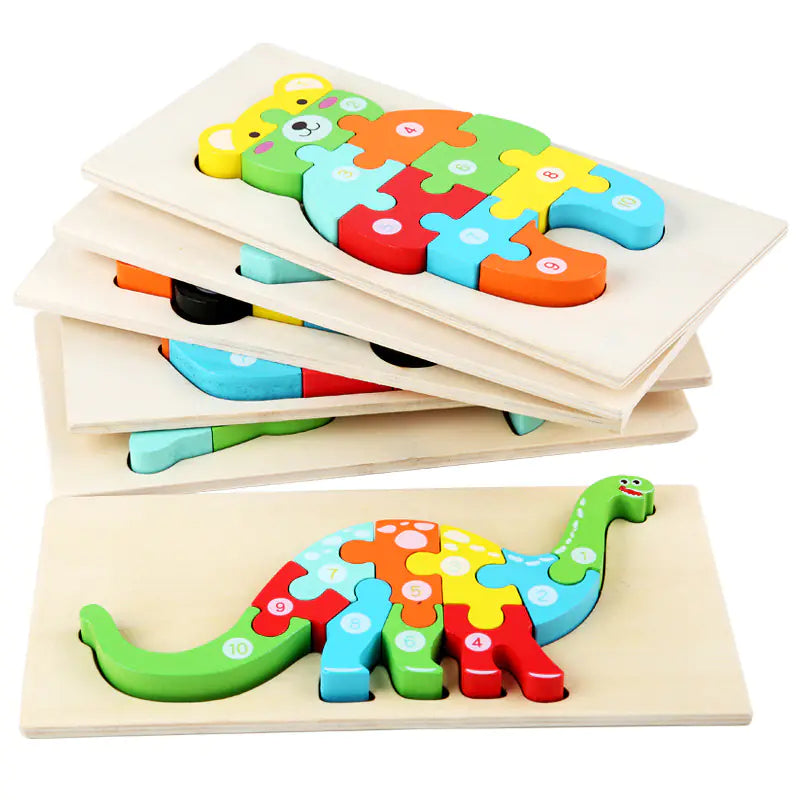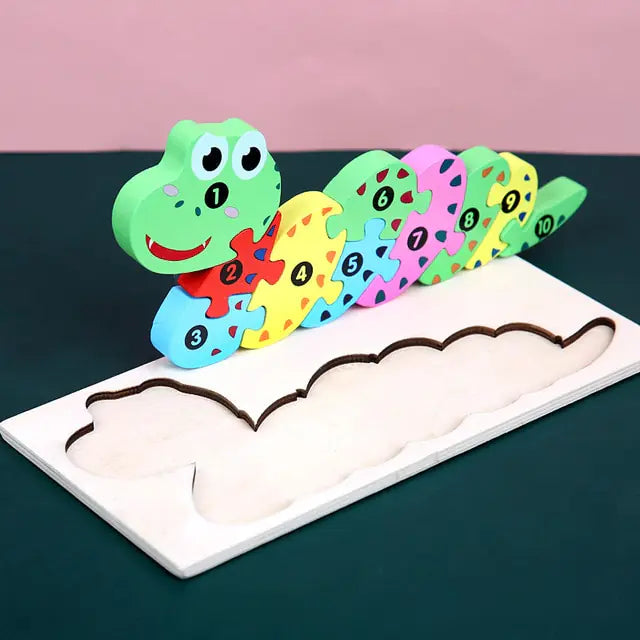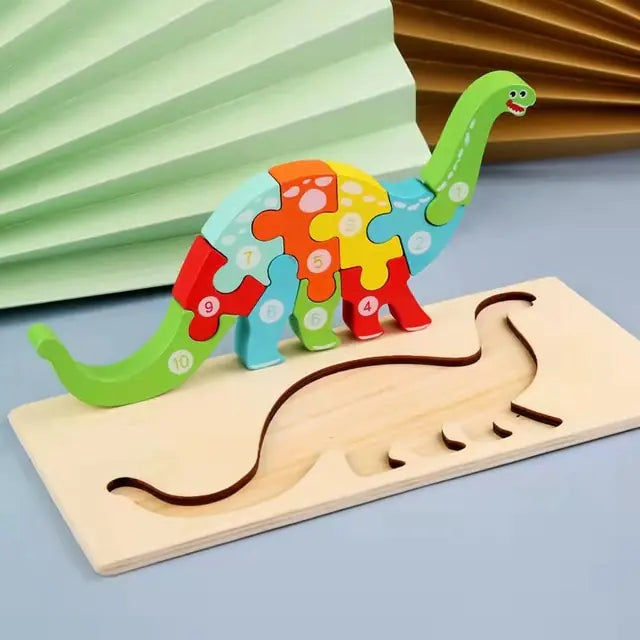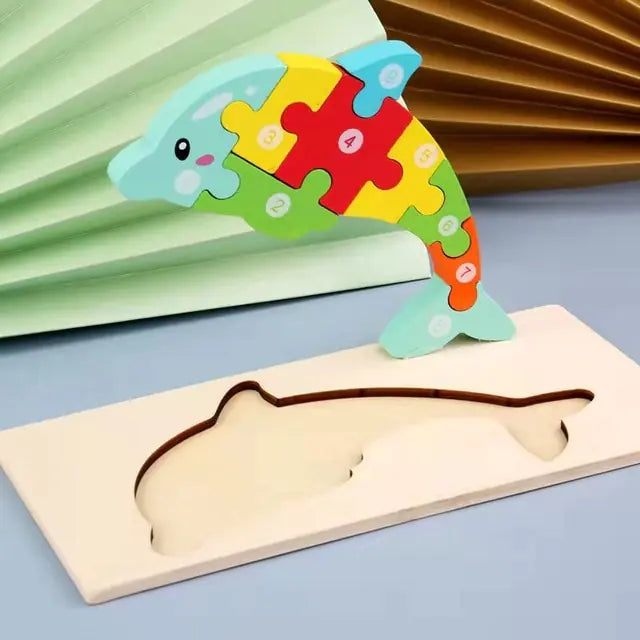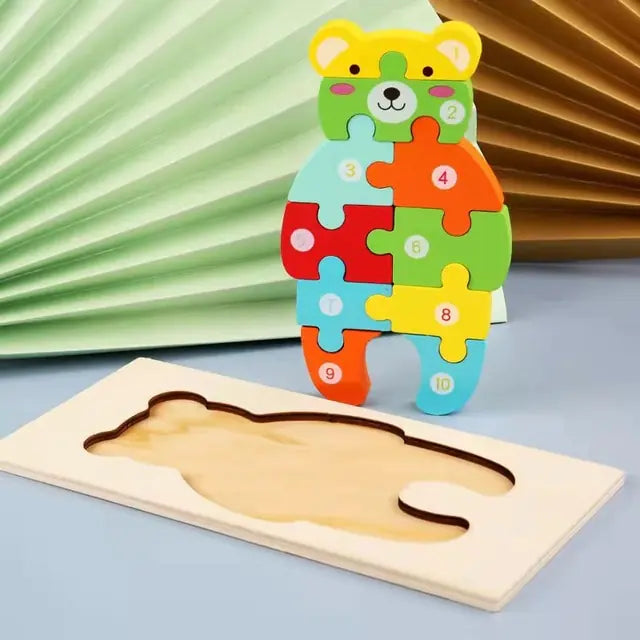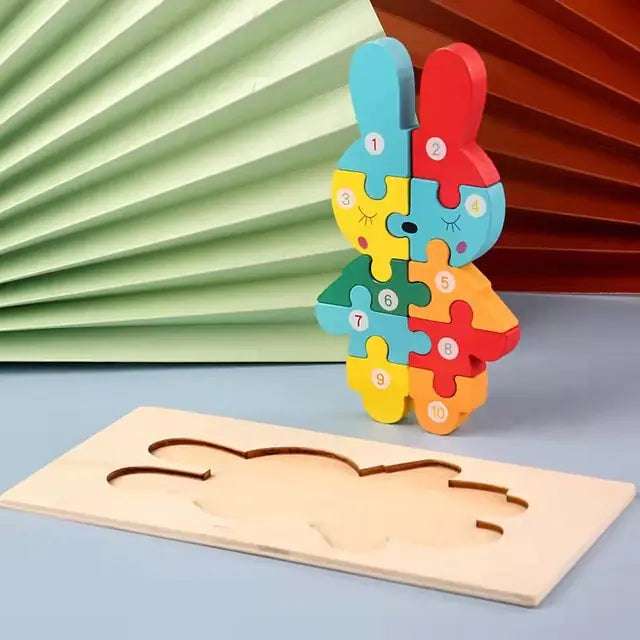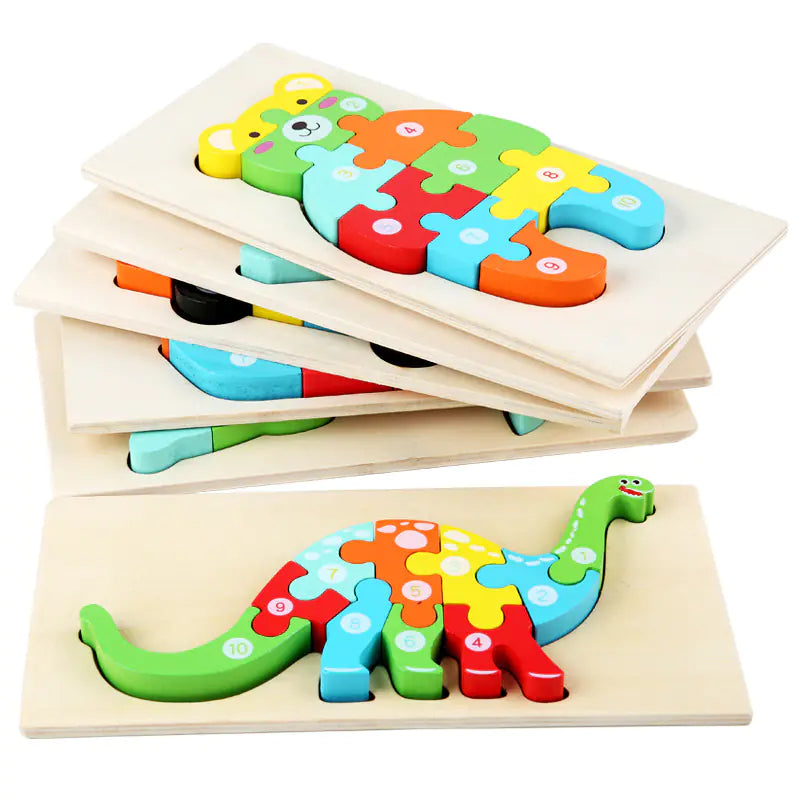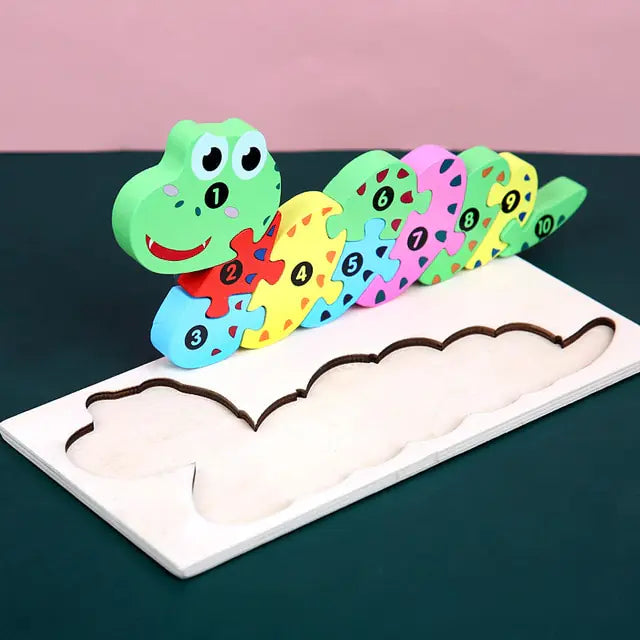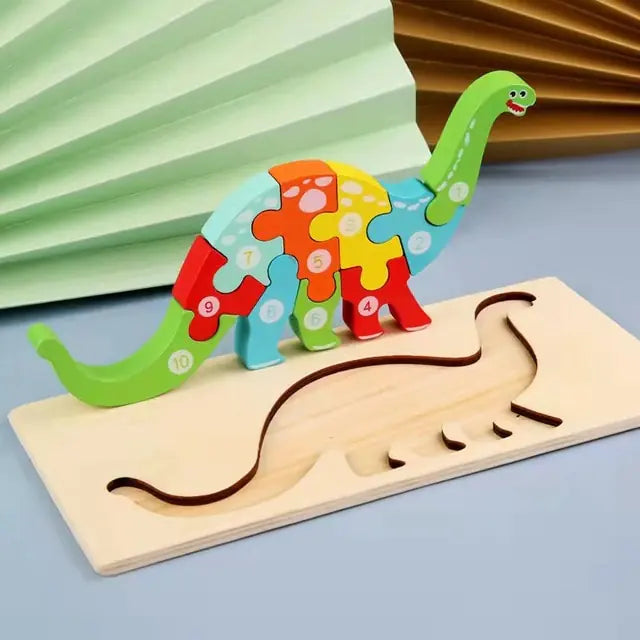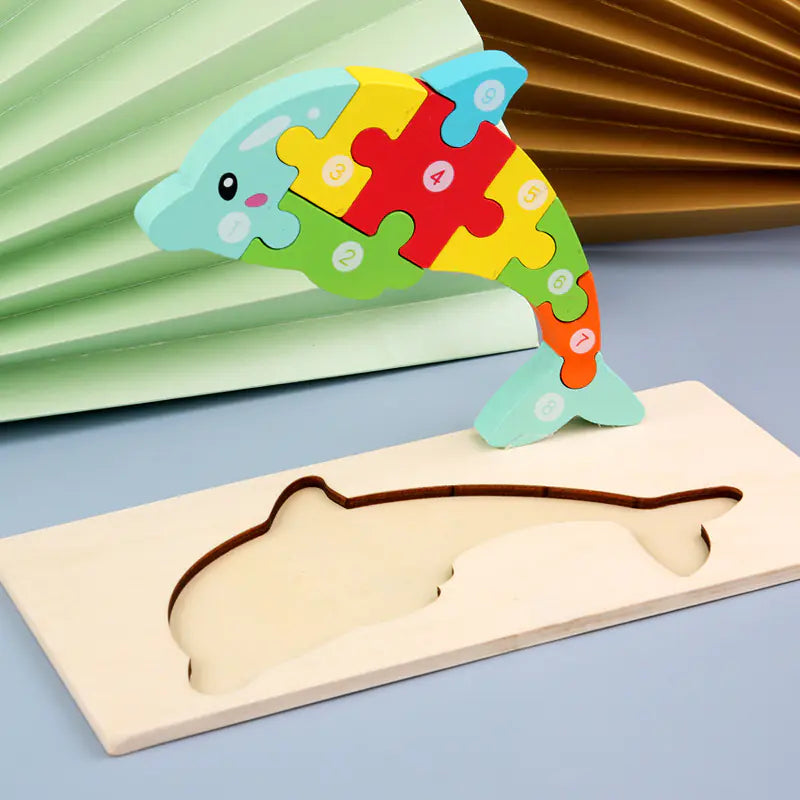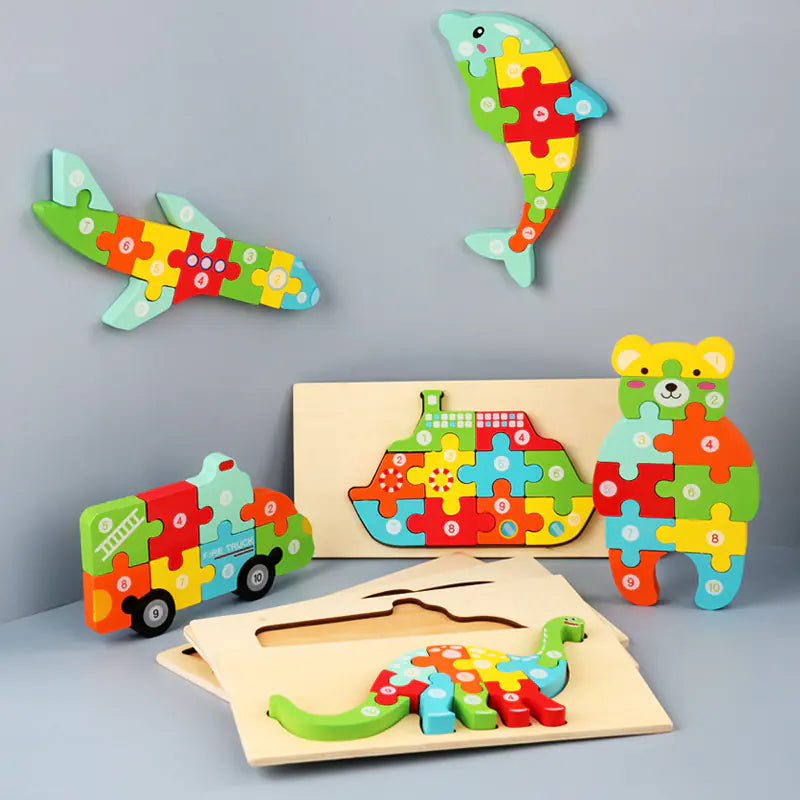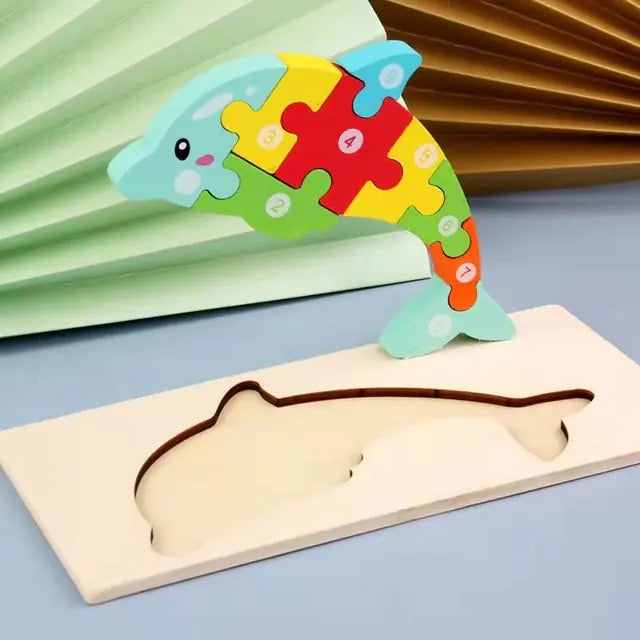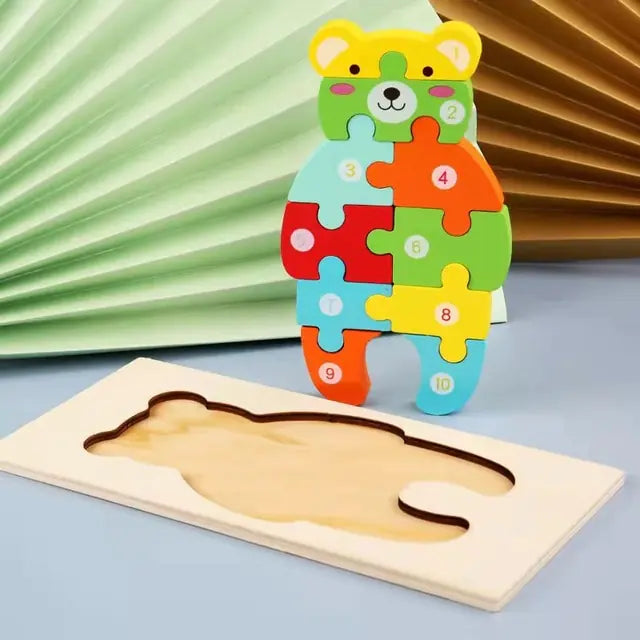Have you ever seen your child's eyes light up when they see a butterfly's wings up close? Or when they mix colors to "make" rain? These moments spark curiosity and can turn into lifelong passions. We want to help you nurture that wonder while keeping play safe and fun.
At BioBox Labs and through guides like Giftron.App’s Top 100 Science Kits list shows kids growing from "why?" to "I did it!"
Imagine your preschooler building a volcano that fizzes or your 8-year-old tracking stars through a DIY telescope. Science kits for kids are more than toys. They're bridges to confidence, creativity, and critical thinking. Every experiment is a step toward raising thinkers who ask questions and solve problems.
At BioBox Labs, we've partnered with experts to curate kits that balance fun and fundamentals. Your child's safety is our top priority, so we highlight age-specific picks from Giftron. App’s trusted list. Ready to turn "Eww!" into "Wow!"? Let's explore how science kits for kids can be your family's new adventure.

Key Takeaways
- Science kits for kids spark curiosity and build problem-solving skills from preschool through elementary years.
- Top picks like BioBox Labs prioritize safety and hands-on learning, and they are backed by Giftron, the app’s tested recommendations.
- Age-specific kits make complex concepts like chemistry or astronomy feel like play, not pressure.
- Parents and kids bond over experiments, creating shared memories while nurturing future innovators.
- Every kit is a step toward fostering a love for learning that stays long after the experiment ends!
Introduction: Nurturing the Next Generation of Innovators

Every child's mind is full of curiosity. Imagine using the best science kits for kids at Giftron to turn "why" questions into passions. At Giftron.App, we've seen parents discover how early exploration shapes bright futures. Let's see how starting young can shape tomorrow's innovators!
The Promise of Early Science Education
Science isn't just for classrooms—it's a language kids learn through play. The best science kits for kids on our Top 100 list spark wonder. Look for kits like Mini Microscope Adventures or Chemistry for Curious Kids, which let toddlers explore safely.
Early exposure builds confidence to ask questions and try new ideas.
Why Start Early?
Here’s what educators agree on:
- Brain Development: Ages 3–6 are prime for forming neural pathways for problem-solving.
- Confidence Boost: Hands-on experiments let kids say, “I did it!”
- Lifelong Curiosity: Starting early turns “I wonder…” into a habit.
“When kids handle real tools at age 4, they see themselves as scientists by 8,” says Dr. Lena Torres, early education specialist.
Remember: safety always comes first. Kits like our list's Safety-First Solar System Kit include non-toxic materials and clear instructions. Let's guide little learners with care and joy!
Science Kits for Kids: A Complete Guide

Choosing the correct educational science kits for kids opens a world of discovery! These tools are more than toys—they're gateways to curiosity. Let's explore how to pick kits that fit your child's age and interests. From chemistry to space exploration, every kit sparks wonder while keeping safety in mind.
Understanding the Kits
What makes a great science kit? Look for ones that match your child’s stage. Preschoolers love simple, sensory-based kits like seed growing sets or color-mixing labs. Older kids might enjoy magnets or solar system models. Check reviews on Giftron. App to find top picks. Quality kits include clear instructions and durable materials, ensuring safe, hands-on learning.
Benefits for Young Minds
- Encourage questions: Kits like volcano building sets turn “why?” into “let’s find out!”
- Build problem-solving skills: Puzzling through experiments boosts confidence and resilience.
- Safety first: Trusted brands use non-toxic materials and provide supervision tips.
“The best kits don't just teach—they invite kids to ask, ‘What happens if…?’” — Dr. Linda Carter, Early Childhood Educator
Remember, every kit is a step toward nurturing a lifelong love for science. Let's make learning an adventure they'll remember forever!
Age-Specific Recommendations for Preschoolers

Wondering how to spark curiosity in your little one? Let’s explore safe, playful ways to introduce science to preschoolers! At this age, safety comes first, so we’ve got you covered with tips and activities that nurture tiny minds without compromising security.
Safety Tips for Little Experimenters
Every adventure starts with care! Here’s how to keep your preschooler safe while exploring:
- Choose kits with non-toxic materials and large, unbreakable pieces.
- Always stay nearby—supervision ensures tiny hands stay safe during messy or hands-on tasks.
- Opt for kits with simplified instructions designed for short attention spans.
Engaging Science Activities for Preschoolers
Let’s dive into fun experiments that teach through play!
- Color Mixing Magic: Use squeeze bottles and water to blend colors and watch hues transform!
- Sensory Science: Create gooey slime or cloud jars to explore textures and states of matter.
- Nature Hunts: Collect leaves, rocks, or bugs and use magnifying glasses for up-close discovery!
These activities lay the groundwork for future learning. Remember, science kits for elementary students can build on these early foundations as kids grow! Let’s make every moment a learning adventure—because curiosity grows best with love and patience.
Science Kits for Elementary Students: Tailored Learning Experiences

Kids grow, and so do their curiosity and learning needs! Science kits for preschoolers evolve into fun, educational tools for elementary students. Imagine doing experiments that link classroom lessons to home or outdoor adventures. At this age, hands-on learning bridges play and education.
Look for kits that boost critical thinking through fun activities like building volcanoes, exploring circuits, or studying ecosystems. Products like Giftron App’s Junior Chemist Lab or Earth Science Explorer offer lab-grade tools for small hands. These kits come with guides that turn everyday items into discovery tools!
- Includes tools like microscopes, test tubes, and nature collection kits
- Aligns with school topics like biology, physics, and earth science
- Encourages teamwork through family-friendly experiment steps
“The best kits let kids ask ‘why’ and ‘how’ while feeling like play,” says Dr. Lisa Nguyen, early education specialist. “They build confidence to tackle harder concepts later!”
Remember: Safety is always first! Always check for non-toxic materials and clear instructions. Wondering where to start? Browse Giftron.App’s collections or ask teachers for curriculum-linked picks. What exciting discovery will your child make today?
Hands-On Experiments: Balancing Fun and Safety

Every great discovery starts with safety! Science kits for kids are not just fun. They also build trust. Let's see how to make every experiment exciting and safe for your little scientist!
Creating a Safe Experiment Environment
Start by setting the stage for success. Here’s how:
- Keep workspaces clean and clutter-free to avoid accidents.
- Use protective gear like gloves or goggles for messy or chemical-based kits.
- Store tools and materials in easy-to-reach, secure containers.
Think of it like setting up a play area—safety first, exploration second!
Supervised Experimentation Benefits
When you join in the fun, everyone wins! Supervised play with science kits for kids:
- Encourages asking “what if?” without fear of harm.
- Helps kids learn from mistakes in a supportive way.
- Builds teamwork and communication skills.
“Safety isn’t a barrier—it’s the foundation for fearless learning.” – National Science Teachers Association
Remember: Your guidance turns “I can’t” into “Let’s try again!” With these steps, science kits for kids become more than toys. They are stepping stones to a lifetime of confident exploration. Ready to dive in? Your child’s next “Eureka!” moment starts here!
Innovative Educational Science Kits for Kids

The best science kits for kids today are full of new ideas! Imagine kits that make planets come alive with augmented reality or let kids code their robots. These tools are more than toys—they open doors to discovery!
Today’s kits mix play with tech in exciting ways. Many now include AR apps, motorized experiments, and digital project guides like Giftron.App’s Solar System Kit lets you see constellations come alive with just a model and an app. Or, try the DNA Discovery Kit from the Top 100 List, where kids design virtual genes on their tablet.
| Kit Name | Innovation Feature | Age Range |
|---|---|---|
| Giftron Solar System Explorer | Augmented Reality Star Tours | 8-12 |
| DNA Discovery Lab | Interactive DNA App for Virtual Experiments | 9-14 |
| CyberBot Coding Kit | Motorized Robots + Step-by-Step Coding Challenges | 7-11 |
“These kits turn ‘how does this work?’ into ‘I built this!’” – Maria R., 4th Grade Teacher
Ever seen a volcano erupt on a screen while mixing real baking soda? That’s the magic of the best science kits for kids! They’re made to grow with your child’s curiosity. Ready to spark their next big “Aha!” moment? Explore kits that blend hands-on play with cutting-edge tech—because wonder sparks when innovation meets imagination!
Expert Interviews: Insights from Educators and Scientists

Let’s hear from the experts shaping tomorrow’s innovators! Educators and scientists share their thoughts on how educational science kits for kids ignite curiosity and build skills. Their insights are a treasure trove of wisdom for parents like you.
Interview Highlights
Teachers and researchers agree: hands-on learning is magic! Here’s what they shared:
- “These kits turn ‘why?’ into ‘wow!’ moments,” says Ms. Lisa Torres, a STEM teacher in Texas.
- Dr. Raj Patel, a child psychologist, adds, “Playful experiments boost problem-solving like nothing else!”
Quotes from the Field
“The best kits let kids fail safely and try again—building resilience!” – Dr. Emily Carter, MIT Educator
| Expert | Key Insight | Takeaway |
|---|---|---|
| Ms. Torres | Hands-on kits spark lifelong curiosity | Choose kits with real-world connections |
| Dr. Patel | Failure in experiments = learning gold | Look for kits that encourage retries |
| Dr. Carter | Safety matters, but so does creativity | Opt for kits with clear safety guides |
These voices remind us that educational science kits for kids aren’t just toys—they’re tools for growth. Every experiment builds confidence, questions, and wonder. Ready to pick the perfect kit? Let these insights guide your choice!
Inspiring Young Scientists: Success Stories and Testimonials

Find out how science kits for elementary students are making learning fun and exciting. These kits turn simple questions into a desire to learn more.
Real Classroom Success
Teachers all over the U.S. talk about the impact of these kits. At Greenwood Elementary, 3rd graders made mini cars with a solar energy kit. Their teacher, Ms. Lopez, says, “Their eyes lit up when the sun powered their creations!”
A 2023 study by Giftron.App found that 89% of classrooms using these kits saw better science test scores.
“These kits make abstract concepts real. Kids now debate science topics like pros and cons of renewable energy!” – Mr. Carter, 5th Grade STEM Lead
| School | Experiment | Impact |
|---|---|---|
| Sunrise Academy | Plant Growth Kit | 95% of students tracked growth logs weekly |
| Pine Tree Middle School | Electricity Circuit Kit | 82% rise in after-school science club members |
Parental Feedback
Parents are thrilled to see their kids excited about learning. Mr. Harris from Ohio says, “My daughter now asks to ‘do experiments for fun!’” Many parents report their kids solving real-world problems, like designing water filters with Thames & Kosmos kits.
Want to see the magic for yourself? These stories show that science kits for elementary students are more than toys. They open doors to a world of learning. Let’s see what your child can discover next!
DIY Science Kits: Creative and Budget-Friendly Experiments

Learning doesn't have to be expensive. Turn your kitchen into a lab with DIY science kits for preschoolers. You can make magic happen with vinegar, baking soda, and food coloring. It's a fun way to teach and save money.
Easy Home Projects
Here’s how to make science fun and easy:
| Project | Materials | Steps |
|---|---|---|
| Volcano Eruption | Baking soda, vinegar, dish soap | 1. Mix baking soda and soap in a bottle. 2. Add vinegar to watch the foam erupt! |
| Rainbow Density Jar | Honey, syrup, water, food coloring | Layer liquids in a jar to show how colors and densities interact. |
Cost-Effective Tips
- Reuse containers from household items (like empty jars or egg cartons).
- Join local library programs for free science activity kits.
- Shop discount stores for bulk supplies like balloons or magnifying glasses.
“The best experiments use curiosity, not cash!” – Dr. Lena Torres, Early Childhood Educator
Always remember safety. Watch over kids and check for dangers. These projects are not only affordable but also open doors to new ideas. Are you ready to make your kitchen a place of discovery? Let's start exploring!
The Best Science Kits for Kids: Top Picks for Every Age

Looking for the perfect science kits for kids to spark wonder? We've searched through top-rated options from Giftron.App and industry lists. We aim to help you find the best. Let's explore fun and learning together!
Product Overviews
- Thames & Kosmos Simple Machines Kit (Ages 8+): Build 26 models and learn about physics basics. It's safe and easy to follow, loved by families!
- National Geographic Volcano Science Kit (Ages 6-12): This kit includes a detailed guide and safe materials for making eruptions.
- 4M Solar Science Kit (Ages 10+): This kit allows you to create solar-powered gadgets. It's excellent for outdoor STEM adventures.
Comparison of Features
What's most important?
- Age Range: Kits like Snap Circuits Jr. (ages 8+) teach electronics basics, while the GeoSafari Jr. Microscope (ages 4+) is designed for little hands.
- Learning Focus: Choose kits based on chemistry, biology, or engineering topics. Pick what your child loves.
- Price Points: Budget-friendly options like Elenco Electronics Lab Kit offer great value without losing quality.
“The best science kits for kids make play into discovery, always keeping safety first.”
Not sure yet? Think about what your child loves. Need something for a birthday or school? These kits are perfect for your family. Ready to start exploring?
Interactive Learning: Merging Play with Science

Imagine turning a kitchen table into a lab where giggles mix with discovery! That’s the magic of the best science kits for kids. These tools let children explore without even realizing how much they’re learning. Think erupting volcanoes, crystal gardens, or even tiny ecosystems—they’re all part of the fun!
Take BioBox Labs’ DNA extraction kit. Kids extract authentic plant DNA while pretending to be forensic scientists! Kits like these teach biology basics through pretend play. Here’s how to blend learning and laughter:
- Choose kits with hands-on tasks like building circuits or growing crystals.
- Encourage guessing games: “What happens if we add more baking soda?”
- Use household items to extend experiments—like creating a homemade lava lamp!
“When play feels like magic, kids forget they’re learning.” – Dr. Elena Torres, STEM Educator
Compare features to find the perfect fit for your little scientist:
| Kit | Age Range | Key Activities | Skills Taught |
|---|---|---|---|
| BioBox DNA Kit | 8+ | Extract plant DNA | Lab techniques, genetics basics |
| Thames & Kosmos Electricity | 10+ | Build a flashlight | Circuits, energy concepts |
| National Geographic Volcano Kit | 6+ | Simulate eruptions | Geology, chemical reactions |
These kits don’t just teach—they create memories! Watch as your child’s eyes light up when their “magic potion” bubbles or glows. Every experiment becomes a story they’ll want to repeat. Ready to turn playtime into a classroom without walls? The best science kits for kids make it simple!
Integrating Technology with Traditional Science Kits

Remember how we talked about blending play and science earlier? Today’s educational science kits for kids use tech to make learning pop! Imagine mixing hands-on experiments with digital tools like AR and VR. These upgrades turn ordinary kits into gateways to cosmic adventures or microscopic worlds!
Enhancing Experiments with AR/VR
Augmented reality (AR) apps let kids point their tablet at a rock and watch minerals light up like a treasure map! VR headsets take them on virtual field trips to volcanoes or space stations. Picture holding a tiny model of the solar system and seeing planets orbit in 3D—suddenly, textbooks come alive! These tools make abstract ideas like ecosystems or atoms feel real.
"Tech isn’t just a tool—it’s a bridge to deeper curiosity!"
Digital Learning Tools
Apps and gadgets make every experiment a tech adventure! Coding robots like the LEGO Mindstorms or digital microscopes that connect to tablets let kids measure data in real time. Interactive apps even guide them step-by-step through experiments, turning their kitchen into a lab! These tools don’t replace hands-on play—they supercharge it.
- AR apps overlay 3D models onto real objects
- VR kits simulate lab environments for safe practice
- Tablet-linked microscopes zoom in on tiny worlds
So, how do you choose? Look for kits that mix physical and digital play. When kids code a robot or explore a virtual rainforest, they’re not just playing but building skills for tomorrow’s world. Let’s pick tools that spark wonder without losing that precious hands-on magic!
Parental Tips: Ensuring a Safe and Stimulating Learning Environment

Make your home a science wonderland! When picking science kits for elementary students, safety and fun are key. Turn your kitchen table or playroom into a mini-lab where curiosity grows. Here's how to ensure safety and fun:
Creating a Home Lab
Choose a safe spot for kids to explore. Make sure the area is clear, well-lit, and easy to clean. Here's how to set it up:
- Assign a dedicated table or corner for experiments.
- Store supplies in labeled containers for easy access.
- Add a “tool caddy” with kid-safe scissors and gloves.
Monitoring Experiment Safety
Stay involved but let kids be creative! Follow these steps:
- Review all instructions before starting.
- Keep a first-aid kit nearby—just in case!
- Ask your child to explain the steps back to you. This checks understanding!
“A safe space builds confidence to take risks,” says the American Association of School Librarians. “Let kids lead—but stay close!”
Remember: science kits for elementary students are tools to grow thinkers, not hazards. With these tips, you're not just a parent—you're their science buddy! Happy experimenting, and keep the wonder alive!
Featuring Quotes: Wisdom from Scientists and Educators

Every great discovery starts with a simple question. Let’s pause and let the words of experts guide your journey with science kits for preschoolers. Their insights remind us why curiosity matters.
Stop and Reflect
Take a moment to absorb these pearls of wisdom:
| Quote | Who Said It? | How to Apply It |
|---|---|---|
| “The seed of discovery is planted early.” | Dr. Alice Carter, Early Childhood Educator | Use science kits for preschoolers to nurture that seed! |
| “Play is the first laboratory of learning.” | Dr. Maria Lopez, STEM Advocate | Pick kits that let kids explore safely and joyfully. |
Words of Encouragement
“Every child is a scientist—your role is to hand them the tools.” —Dr. Raj Patel, Childhood Development Specialist
We believe in small steps! Dr. Patel’s words remind us that even science kits for preschoolers can spark lifelong passions. Ask yourself: What simple experiment will you try together today?
Remember, you’re not just buying a kit but building a future. Let these words guide your choices and keep learning fun!
Cultivating Curiosity: Strategies to Spark a Lifelong Love for Science
Every child’s mind is full of sparks. Science kits for kids are more than toys. They help grow curiosity that grows with your child. Let’s make small experiments into big adventures they'll never forget!
“The best scientists start as curious kids. Let them explore, fail, and try again—every mistake is a lesson in disguise.”
Encouraging Inquiry
Wonder starts with questions! Try these playful methods:
- Ask “What would happen if…” while using science kits for kids.
- Encourage journaling: Draw predictions before experiments and results afterward.
- Link activities to their interests—like space, animals, or weather.
Building Confidence Through Experimentation
Confidence blooms when kids feel capable. Here’s how to help:
| Strategy | Action |
|---|---|
| Start small | Pick beginner kits like crystal growing or volcano models. |
| Celebrate effort | Applaud their process, not just results. Say, “You tried three times—that’s awesome!” |
Remember: Science is a journey, not a race. Let’s keep curiosity alive with patience and praise!
As we finish our journey through science kits, remember: every experiment sparks a new idea. Whether your child is a preschooler discovering magnets or a grade-schooler building circuits, the best science kits for kids are more than toys. They're gateways to big ideas.
We've shared tips to keep little scientists safe and how hands-on learning boosts curiosity. We've also featured real stories of kids thriving with these tools.
Think about the age-specific picks we covered. Are they ready for simple chemistry sets or tech-enhanced kits? The right choice builds confidence and fuels lifelong curiosity. Experts remind us: even small experiments at home can ignite big passions.
With so many of the best science kits for kids designed for safety and fun, there's no better time to start.
So, where do you begin? Let their questions guide you. Watch as they mix, build, and ask “what if?” These moments aren't just play—they're the start of something amazing.
Ready to pick a kit and see their eyes light up? The adventure awaits!
What are the best science kits for kids?
The top science kits for kids depend on their age and what they like. Thames & Kosmos' Chem C1000, Snap Circuits, and National Geographic's Rock Tumbler Kit are superb. They offer fun experiments and interesting topics!
How do science kits foster critical thinking in children?
Science kits help kids think critically by asking questions and conducting experiments. Through trial and error, they learn to solve problems creatively and analytically.
Are science kits safe for preschoolers?
Yes, many science kits for preschoolers are safe and designed for their age. Choose kits that are safe and easy to follow. They should encourage curiosity while keeping kids safe!
What types of science kits are available for elementary students?
Elementary students can find science kits with structured experiments. Look for kits on mechanics, chemistry, or biology. They make learning fun and tie in with school subjects!
How can parents create a safe lab environment at home?
Set up a special area with safety gear like goggles and gloves to create a safe lab. Always supervise experiments and teach kids about safety. This way, they can have fun and learn safely!
What fun DIY science projects can I do at home with my kids?
You can try making a baking soda volcano, homemade slime, or growing crystals. These projects use everyday items and are both fun and educational!
How can technology enhance science kits for kids?
Adding augmented reality (AR) or virtual reality (VR) to science kits makes learning more exciting. These tech-enhanced kits offer interactive experiences. They help kids see scientific concepts in new ways!
Why is hands-on experimentation necessary for children's learning?
Hands-on experiments connect theory with practice. They help kids understand science better. This encourages a love for learning and exploring!
Where can I find reviews for the best science kits available?
Check out Amazon, Target, and educational blogs for science kit reviews. Look for feedback from customers and experts. This will help you choose the best kit!
